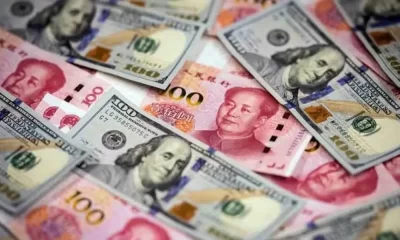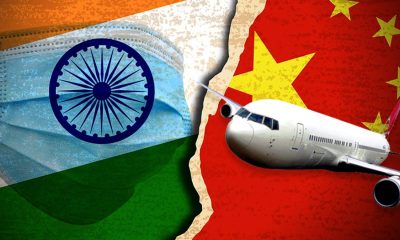News
China’s Xi Jinping’s Relentless Purge on the Military and Political Circles
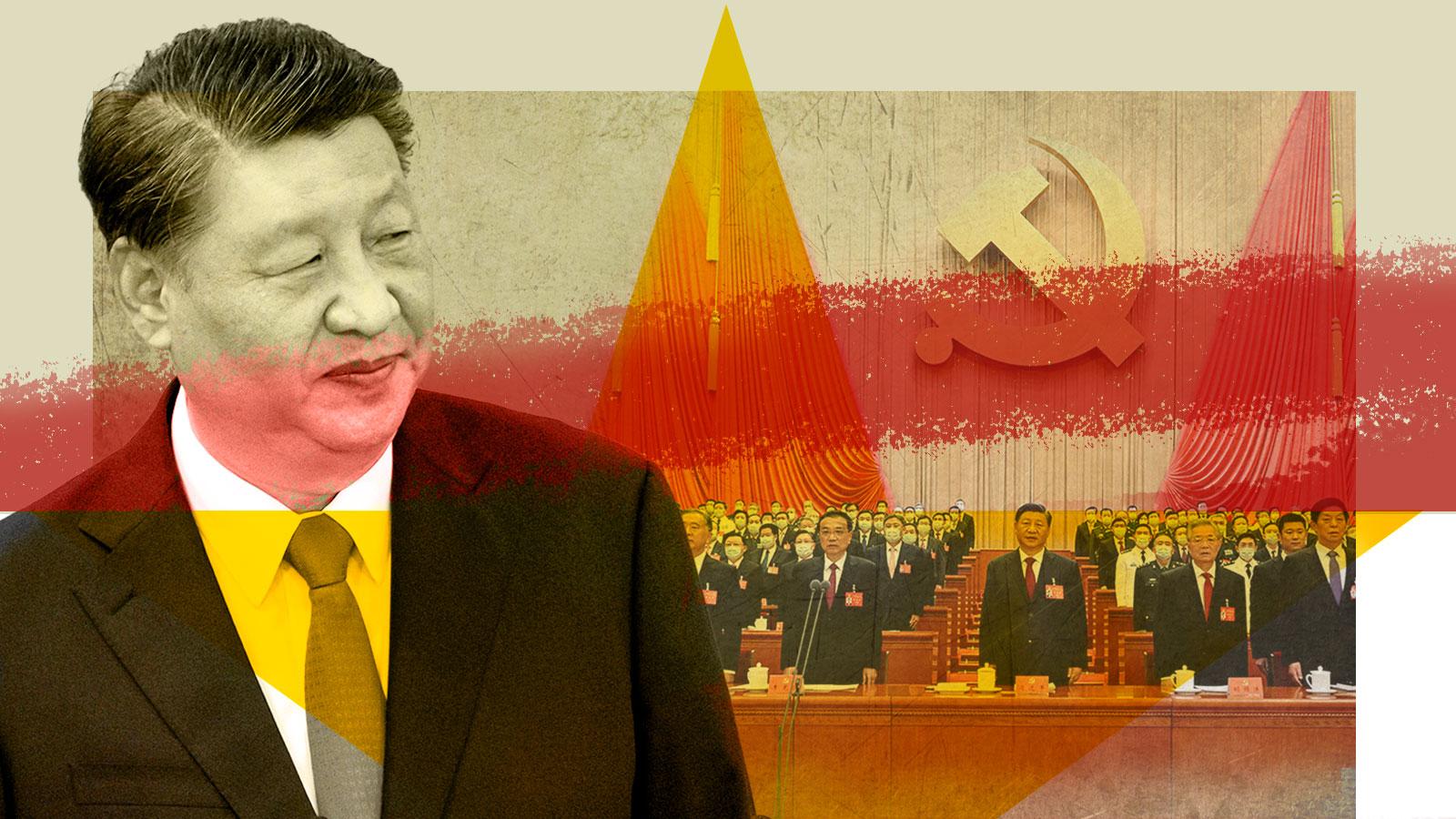
In a significant move that has shaken the political landscape of China, President Xi Jinping has spearheaded a relentless anti-corruption campaign, leading to a series of high-profile purges within the country’s military and political circles.
This aggressive stance against corruption, a cornerstone of Xi’s leadership since 2012, has recently intensified, revealing deep-rooted issues and vulnerabilities within China’s power structures. The sweeping purges of key defence industry leaders and military generals highlight Xi’s uncompromising stance on rooting out corruption and disloyalty within the government and military.
These actions underscore the importance of maintaining control and loyalty among high-ranking officials to consolidate power and strengthen Xi’s grip on authority. Recent developments have illuminated Xi Jinping’s challenges as he navigates a complex web of corruption and mismanagement within China’s military ranks.
These purges aim to eliminate corrupt practices and serve as a clear message to those in power about the consequences of deviating from the established norms under Xi’s leadership.
As the purge continues to unfold, the implications of these actions are poised to have far-reaching effects on China’s political and military spheres, signalling a pivotal moment in Xi Jinping’s ongoing efforts to solidify his control and uphold the principles of governance and integrity in the face of internal challenges.
Recently, China has been amid a sweeping purge initiated by President Xi Jinping, particularly targeting high-ranking military officials. This aggressive anti-corruption crackdown within the Chinese military aims to eradicate deep-rooted corruption that has plagued the institution for years.
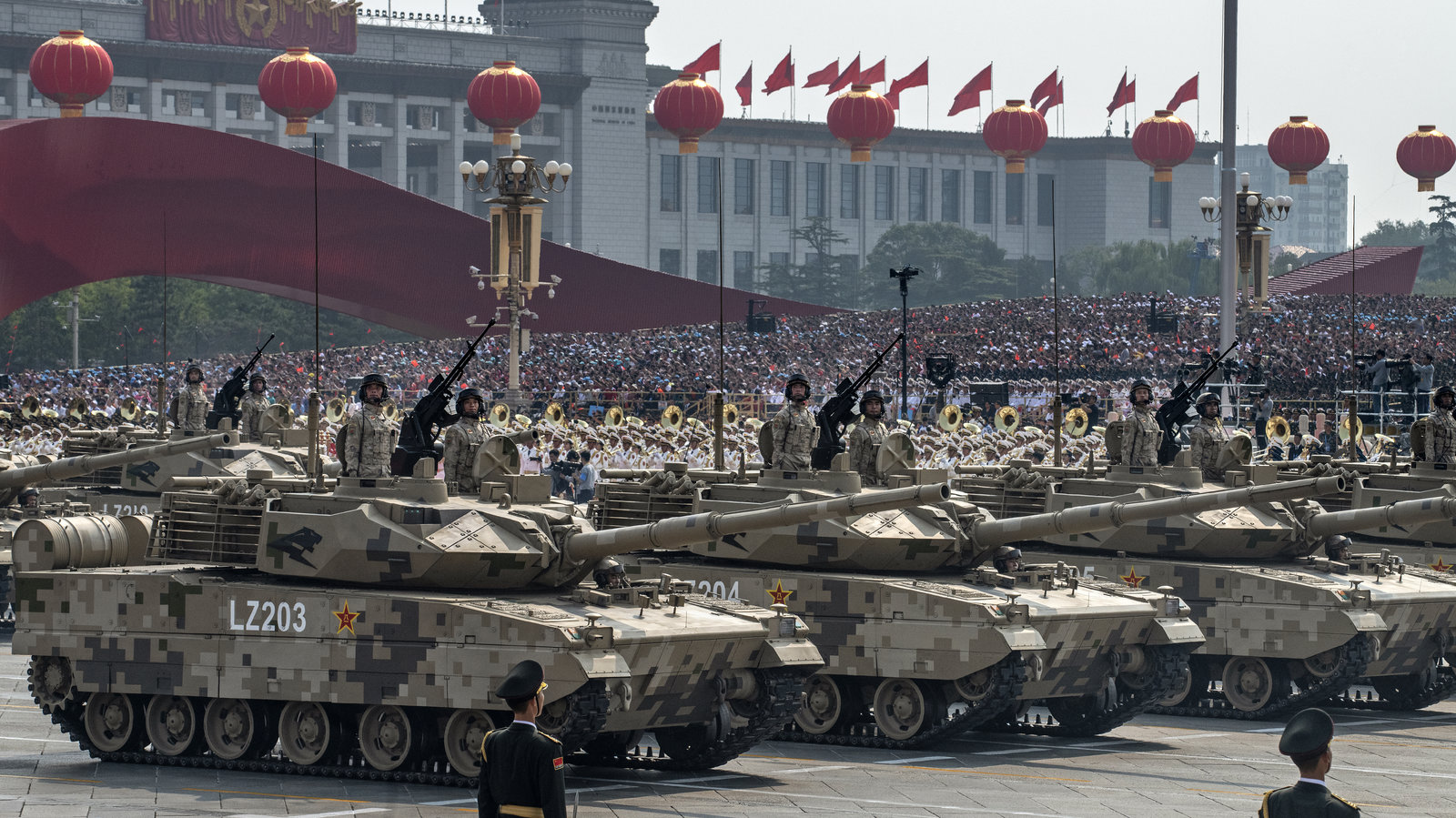
Roots of Corruption in China’s Military
Corruption within the Chinese military has been embedded for a long time, with high-ranking officials abusing their power for personal gain. Embezzlement, bribery, and nepotism have tainted the integrity of the military, leading to a lack of accountability and discipline.
The consequences of this corruption have severely undermined the trust in the military’s capabilities and readiness to fulfil its domestic and international duties.
As President Xi Jinping’s purge unfolds, the People’s Liberation Army (PLA) is experiencing significant disruptions in its leadership structure.
The removal of key generals and commanders has resulted in a weakened military hierarchy, affecting decision-making processes and operational efficiency.
This rapid overhaul within the PLA could compromise China’s defence capabilities and national security, leaving gaps that adversaries may seek to exploit.
Additionally, the upheaval created by the anti-corruption drive may cause internal divisions and distrust among military personnel, further impacting the overall strength of the Chinese military.
The implications of this sweeping purge extend beyond individual dismissals, signalling a broader transformation in China’s military landscape.
The repercussions of these actions on the PLA’s effectiveness and preparedness are yet to fully unfold, raising uncertainties about the country’s future military prowess and regional stability.
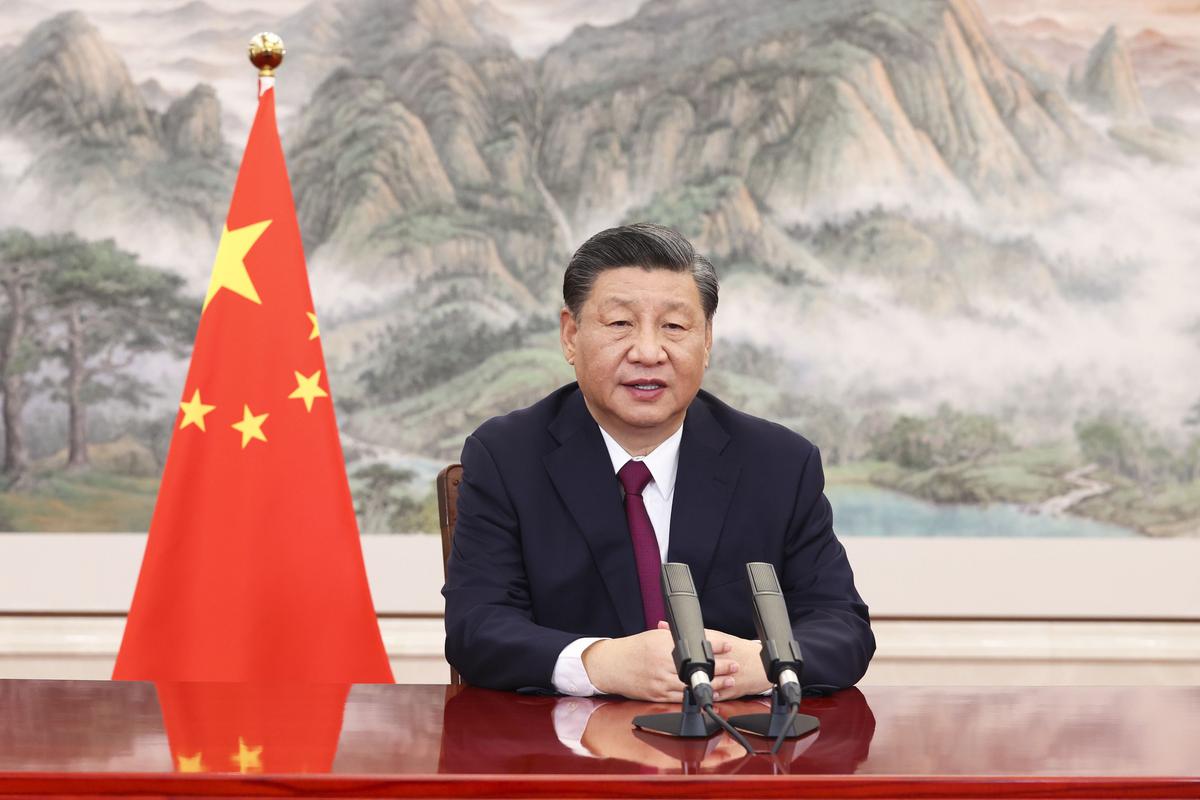
Xi Jinping’s Anti-Corruption Campaign
After the conclusion of the 18th National Congress of the Chinese Communist Party in 2012, Xi Jinping launched a far-reaching anti-corruption campaign to purge corrupt officials from the Chinese government.
Xi Jinping’s anti-corruption campaign aims to instil political loyalty, enhance accountability, and promote transparency within the Chinese government.
By targeting corrupt practices and officials, the campaign seeks to strengthen the Communist Party’s control and legitimacy. Enhancing political loyalty ensures that party members prioritize the party’s interests above personal gains.
Accountability measures hold officials responsible for their actions, fostering a sense of duty towards the people.
Furthermore, increasing transparency helps build trust between the government and the public, showcasing a commitment to combating corruption at all levels.
President Xi’s anti-corruption efforts have had significant successes in rooting out corrupt officials and reining in malpractices within the government.
By targeting high-ranking “tigers” and lower-level “flies,” the campaign has shown a commitment to combating corruption at all levels.
Furthermore, the campaign has garnered domestic support, with many Chinese citizens applauding the crackdown on corrupt practices that have long plagued the government. However, criticisms of the anti-corruption campaign have also emerged domestically and internationally.
Some critics argue that the campaign is being used as a political tool to remove political rivals or consolidate power rather than solely combating corruption.
Concerns have been raised about the lack of transparency in handling corruption cases and the potential for the campaign to be selectively enforced for political motives.
Additionally, there are questions about the sustainability of the campaign in the long term and whether it will lead to lasting systemic changes or merely serve as a short-term solution.
Xi Jinping’s anti-corruption campaign has had notable successes and significant criticisms. While it has effectively rooted out corrupt officials and enhanced accountability, concerns remain about its long-term impact and the potential for political motivations behind certain actions.
As the campaign continues to evolve, its true effectiveness and legacy will become clearer in shaping the future of governance in China.
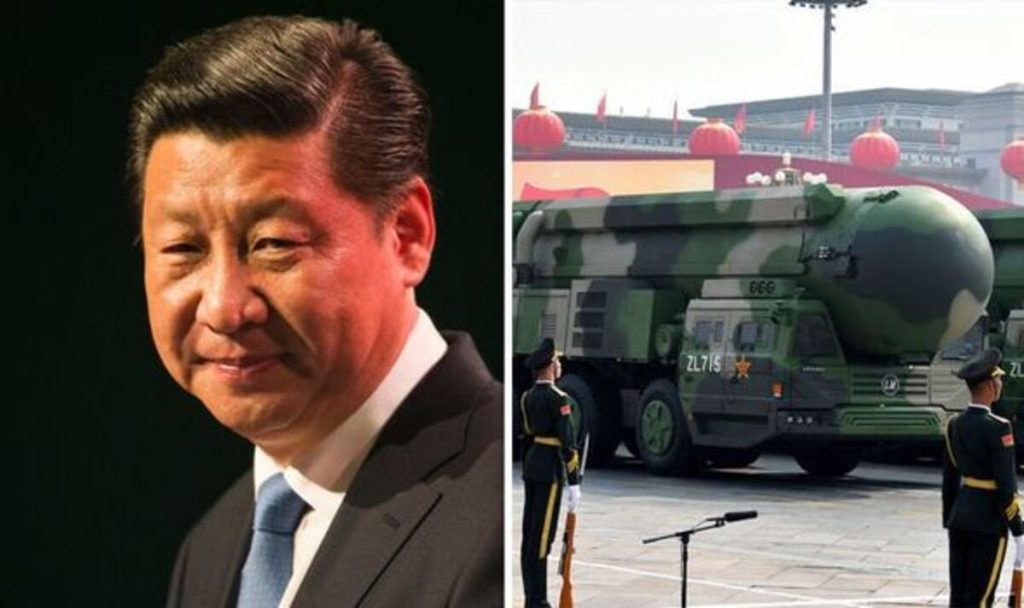
US Intelligence and China’s Military Purge
In global politics, the recent revelations surrounding China’s Xi Jinping’s anti-corruption crackdown within the military have sent shockwaves through the US intelligence community. The impact on US-China relations and the broader global implications of this military purge warrant a closer examination.
The exposure of corruption within China’s military hierarchy has the potential to significantly strain diplomatic ties between the United States and China.
As US intelligence agencies uncover details of military officials engaged in corrupt practices, the trust between the two nations may dwindle. This could lead to heightened tensions and reevaluating security alliances in the Asia-Pacific region.
The US government may navigate a delicate balance between addressing China’s internal affairs and maintaining a stable international relationship.
Xi Jinping’s military purge extends beyond domestic boundaries and carries substantial global implications.
The repercussions of this purge could reverberate across the international stage, impacting regional security dynamics and altering perceptions of China’s military capabilities worldwide.
As the world closely monitors these developments, questions arise about the stability of the Asia-Pacific region and the strategic calculus of other global powers in response to China’s internal restructuring.
In the fast-paced landscape of international politics, the revelations emerging from China’s military purge have the potential to reshape the geopolitical landscape, with ramifications extending far beyond the boundaries of the Chinese mainland.
As the dust begins to settle, the global community eagerly awaits the unfolding of events and the enduring impact they may have on the intricate web of international relations.
Xi Jinping’s political purge in China has profoundly reshaped the country’s military structure and intensified anti-corruption efforts within the leadership. He has signalled a significant shift in power dynamics and strategic priorities within the People’s Liberation Army (PLA) by conducting a sweeping military purge. This move consolidates his authority and aims to enhance the PLA’s combat readiness and loyalty to the Communist Party.
Furthermore, Xi Jinping’s anti-corruption campaign echoes Mao Zedong’s dictum that “the party commands the gun,” emphasizing the crucial link between political control and military strength.
The intensified efforts to root out corruption within the PLA aim to improve efficiency and discipline and demonstrate Xi’s commitment to maintaining a clean and loyal military establishment.
Xi Jinping’s political purge and anti-corruption initiatives will likely have far-reaching implications for China’s military capabilities and internal governance. As the country continues to navigate complex geopolitical challenges, the outcomes of these efforts will be closely watched to assess their impact on China’s position in the global arena.
By Geoff Thomas

News
Trudeau’s Gun Grab Could Cost Taxpayers a Whopping $7 Billion

A recent report indicates that since Trudeau’s announcement of his gun buyback program four years ago, almost none of the banned firearms have been surrendered.
The federal government plans to purchase 2,063 firearm models from retailers following the enactment of Bill C-21, which amends various Acts and introduces certain consequential changes related to firearms. It was granted royal assent on December 15 of last year.
This ban immediately criminalized the actions of federally-licensed firearms owners regarding the purchase, sale, transportation, importation, exportation, or use of hundreds of thousands of rifles and shotguns that were previously legal.
The gun ban focused on what it termed ‘assault-style weapons,’ which are, in reality, traditional semi-automatic rifles and shotguns that have enjoyed popularity among hunters and sport shooters for over a century.
In May 2020, the federal government enacted an Order-in-Council that prohibited 1,500 types of “assault-style” firearms and outlined specific components of the newly banned firearms. Property owners must adhere to the law by October 2023.
Trudeau’s Buyback Hasn’t Happened
“In the announcement regarding the ban, the prime minister stated that the government would seize the prohibited firearms, assuring that their lawful owners would be ‘grandfathered’ or compensated fairly.” “That hasn’t happened,” criminologist Gary Mauser told Rebel News.
Mauser projected expenses ranging from $2.6 billion to $6.7 billion. The figure reflects the compensation costs amounting to $756 million, as outlined by the Parliamentary Budget Office (PBO).
“The projected expenses for gathering the illegal firearms are estimated to range from $1.6 billion to $7 billion.” “This range estimate increases to between $2.647 billion and $7 billion when compensation costs to owners are factored in,” Mauser stated.
Figures requested by Conservative MP Shannon Stubbs concerning firearms prohibited due to the May 1, 2020 Order In Council reveal that $72 million has been allocated to the firearm “buyback” program, yet not a single firearm has been confiscated to date.
In a recent revelation, Public Safety Canada disclosed that the federal government allocated a staggering $41,094,556, as prompted by an order paper question from Conservative Senator Don Plett last September, yet yielded no tangible outcomes.
An internal memo from late 2019 revealed that the Liberals projected their politically motivated harassment would incur a cost of $1.8 billion.
Enforcement efforts Questioned
By December 2023, estimates from TheGunBlog.ca indicate that the Liberals and RCMP had incurred or were responsible for approximately $30 million in personnel expenses related to the enforcement efforts. The union representing the police service previously stated that the effort to confiscate firearms is a “misdirected effort” aimed at ensuring public safety.
“This action diverts crucial personnel, resources, and funding from tackling the more pressing and escalating issue of criminal use of illegal firearms,” stated the National Police Federation (NPF).
The Canadian Sporting Arms & Ammunition Association (CSAAA), representing firearms retailers, has stated it will have “zero involvement” in the confiscation of these firearms. Even Canada Post held back from providing assistance due to safety concerns.
The consultant previously assessed that retailers are sitting on almost $1 billion worth of inventory that cannot be sold or returned to suppliers because of the Order-In-Council.
“Despite the ongoing confusion surrounding the ban, after four years, we ought to be able to address one crucial question.” Has the prohibition enhanced safety for Canadians? Mauser asks.
Illegally Obtained Firearms are the Problem
Statistics Canada reports a 10% increase in firearm-related violent crime between 2020 and 2022, rising from 12,614 incidents to 13,937 incidents. In that timeframe, the incidence of firearm-related violent crime increased from 33.7 incidents per 100,000 population in 2021 to 36.7 incidents the subsequent year.
“This marks the highest rate documented since the collection of comparable data began in 2009,” the criminologist explains.
Supplementary DataData indicates that firearm homicides have risen since 2020. “The issue lies not with lawfully-held firearms,” Mauser stated.
Firearms that have been banned under the Order-in-Council continue to be securely stored in the safes of their lawful owners. The individuals underwent a thorough vetting process by the RCMP and are subject to nightly monitoring to ensure there are no infractions that could pose a risk to public safety.
“The firearms involved in homicides were seldom legally owned weapons wielded by their rightful owners,” Mauser continues. The number of offenses linked to organized crime has surged from 4,810 in 2016 to a staggering 13,056 in 2020.
“If those in power … aim to diminish crime and enhance public safety, they ought to implement strategies that effectively focus on offenders and utilize our limited tax resources judiciously to reach these objectives,” he stated.
Related News:
Millennials in Canada Have Turned their Backs on Justin Trudeau
Millennials in Canada Have Turned their Backs on Justin Trudeau
News
Google’s Search Dominance Is Unwinding, But Still Accounting 48% Search Revenue

Google is so closely associated with its key product that its name is a verb that signifies “search.” However, Google’s dominance in that sector is dwindling.
According to eMarketer, Google will lose control of the US search industry for the first time in decades next year.
Google will remain the dominant search player, accounting for 48% of American search advertising revenue. And, remarkably, Google is still increasing its sales in the field, despite being the dominating player in search since the early days of the George W. Bush administration. However, Amazon is growing at a quicker rate.
Google’s Search Dominance Is Unwinding
Amazon will hold over a quarter of US search ad dollars next year, rising to 27% by 2026, while Google will fall even more, according to eMarketer.
The Wall Street Journal was first to report on the forecast.
Lest you think you’ll have to switch to Bing or Yahoo, this isn’t the end of Google or anything really near.
Google is the fourth-most valued public firm in the world. Its market worth is $2.1 trillion, trailing just Apple, Microsoft, and the AI chip darling Nvidia. It also maintains its dominance in other industries, such as display advertisements, where it dominates alongside Facebook’s parent firm Meta, and video ads on YouTube.
To put those “other” firms in context, each is worth more than Delta Air Lines’ total market value. So, yeah, Google is not going anywhere.
Nonetheless, Google faces numerous dangers to its operations, particularly from antitrust regulators.
On Monday, a federal judge in San Francisco ruled that Google must open up its Google Play Store to competitors, dealing a significant blow to the firm in its long-running battle with Fortnite creator Epic Games. Google announced that it would appeal the verdict.
In August, a federal judge ruled that Google has an illegal monopoly on search. That verdict could lead to the dissolution of the company’s search operation. Another antitrust lawsuit filed last month accuses Google of abusing its dominance in the online advertising business.
Meanwhile, European regulators have compelled Google to follow tough new standards, which have resulted in multiple $1 billion-plus fines.

Pixa Bay
Google’s Search Dominance Is Unwinding
On top of that, the marketplace is becoming more difficult on its own.
TikTok, the fastest-growing social network, is expanding into the search market. And Amazon has accomplished something few other digital titans have done to date: it has established a habit.
When you want to buy anything, you usually go to Amazon, not Google. Amazon then buys adverts to push companies’ products to the top of your search results, increasing sales and earning Amazon a greater portion of the revenue. According to eMarketer, it is expected to generate $27.8 billion in search revenue in the United States next year, trailing only Google’s $62.9 billion total.
And then there’s AI, the technology that (supposedly) will change everything.
Why search in stilted language for “kendall jenner why bad bunny breakup” or “police moving violation driver rights no stop sign” when you can just ask OpenAI’s ChatGPT, “What’s going on with Kendall Jenner and Bad Bunny?” in “I need help fighting a moving violation involving a stop sign that wasn’t visible.” Google is working on exactly this technology with its Gemini product, but its success is far from guaranteed, especially with Apple collaborating with OpenAI and other businesses rapidly joining the market.
A Google spokeswoman referred to a blog post from last week in which the company unveiled ads in its AI overviews (the AI-generated text that appears at the top of search results). It’s Google’s way of expressing its ability to profit on a changing marketplace while retaining its business, even as its consumers steadily transition to ask-and-answer AI and away from search.

Google has long used a single catchphrase to defend itself against opponents who claim it is a monopoly abusing its power: competition is only a click away. Until recently, that seemed comically obtuse. Really? We are going to switch to Bing? Or Duck Duck Go? Give me a break.
But today, it feels more like reality.
Google is in no danger of disappearing. However, every highly dominating company faces some type of reckoning over time. GE, a Dow mainstay for more than a century, was broken up last year and is now a shell of its previous dominance. Sears declared bankruptcy in 2022 and is virtually out of business. US Steel, long the foundation of American manufacturing, is attempting to sell itself to a Japanese corporation.
SOURCE | CNN
News
The Supreme Court Turns Down Biden’s Government Appeal in a Texas Emergency Abortion Matter.

(VOR News) – A ruling that prohibits emergency abortions that contravene the Supreme Court law in the state of Texas, which has one of the most stringent abortion restrictions in the country, has been upheld by the Supreme Court of the United States. The United States Supreme Court upheld this decision.
The justices did not provide any specifics regarding the underlying reasons for their decision to uphold an order from a lower court that declared hospitals cannot be legally obligated to administer abortions if doing so would violate the law in the state of Texas.
Institutions are not required to perform abortions, as stipulated in the decree. The common populace did not investigate any opposing viewpoints. The decision was made just weeks before a presidential election that brought abortion to the forefront of the political agenda.
This decision follows the 2022 Supreme Court ruling that ended abortion nationwide.
In response to a request from the administration of Vice President Joe Biden to overturn the lower court’s decision, the justices expressed their disapproval.
The government contends that hospitals are obligated to perform abortions in compliance with federal legislation when the health or life of an expectant patient is in an exceedingly precarious condition.
This is the case in regions where the procedure is prohibited. The difficulty hospitals in Texas and other states are experiencing in determining whether or not routine care could be in violation of stringent state laws that prohibit abortion has resulted in an increase in the number of complaints concerning pregnant women who are experiencing medical distress being turned away from emergency rooms.
The administration cited the Supreme Court’s ruling in a case that bore a striking resemblance to the one that was presented to it in Idaho at the beginning of the year. The justices took a limited decision in that case to allow the continuation of emergency abortions without interruption while a lawsuit was still being heard.
In contrast, Texas has been a vocal proponent of the injunction’s continued enforcement. Texas has argued that its circumstances are distinct from those of Idaho, as the state does have an exemption for situations that pose a significant hazard to the health of an expectant patient.
According to the state, the discrepancy is the result of this exemption. The state of Idaho had a provision that safeguarded a woman’s life when the issue was first broached; however, it did not include protection for her health.
Certified medical practitioners are not obligated to wait until a woman’s life is in imminent peril before they are legally permitted to perform an abortion, as determined by the state supreme court.
The state of Texas highlighted this to the Supreme Court.
Nevertheless, medical professionals have criticized the Texas statute as being perilously ambiguous, and a medical board has declined to provide a list of all the disorders that are eligible for an exception. Furthermore, the statute has been criticized for its hazardous ambiguity.
For an extended period, termination of pregnancies has been a standard procedure in medical treatment for individuals who have been experiencing significant issues. It is implemented in this manner to prevent catastrophic outcomes, such as sepsis, organ failure, and other severe scenarios.
Nevertheless, medical professionals and hospitals in Texas and other states with strict abortion laws have noted that it is uncertain whether or not these terminations could be in violation of abortion prohibitions that include the possibility of a prison sentence. This is the case in regions where abortion prohibitions are exceedingly restrictive.
Following the Supreme Court’s decision to overturn Roe v. Wade, which resulted in restrictions on the rights of women to have abortions in several Republican-ruled states, the Texas case was revisited in 2022.
As per the orders that were disclosed by the administration of Vice President Joe Biden, hospitals are still required to provide abortions in cases that are classified as dire emergency.
As stipulated in a piece of health care legislation, the majority of hospitals are obligated to provide medical assistance to patients who are experiencing medical distress. This is in accordance with the law.
The state of Texas maintained that hospitals should not be obligated to provide abortions throughout the litigation, as doing so would violate the state’s constitutional prohibition on abortions. In its January judgment, the 5th United States Circuit Court of Appeals concurred with the state and acknowledged that the administration had exceeded its authority.
SOURCE: AP
SEE ALSO:
Could Last-Minute Surprises Derail Kamala Harris’ Campaign? “Nostradamus” Explains the US Poll.
-

 News3 years ago
News3 years agoLet’s Know About Ultra High Net Worth Individual
-
Entertainment2 years ago
Mabelle Prior: The Voice of Hope, Resilience, and Diversity Inspiring Generations
-

 Health3 years ago
Health3 years agoHow Much Ivermectin Should You Take?
-

 Tech2 years ago
Tech2 years agoTop Forex Brokers of 2023: Reviews and Analysis for Successful Trading
-

 Lifestyles3 years ago
Lifestyles3 years agoAries Soulmate Signs
-

 Movies2 years ago
Movies2 years agoWhat Should I Do If Disney Plus Keeps Logging Me Out of TV?
-

 Health3 years ago
Health3 years agoCan I Buy Ivermectin Without A Prescription in the USA?
-

 Learning2 years ago
Learning2 years agoVirtual Numbers: What Are They For?
